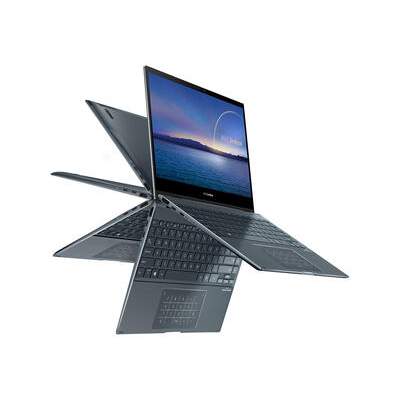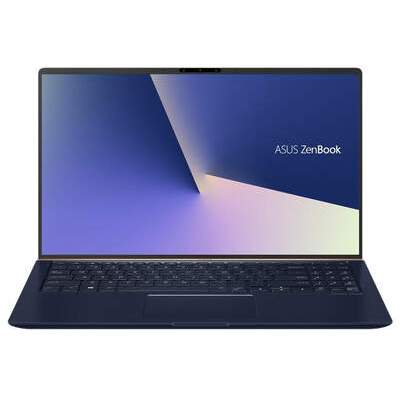ASUS ZenBook Review – The Pros and Cons You Need To Know

Our Favorite ZenBook Models
The Asus ZenBook is an ultra-light notebook computer that has been part of Asus’s lineup for nearly a decade. The ZenBook offers strong visuals and a sleek design at a mid-range price. How do the recent additions to the ZenBook compare to their predecessors? If you’re considering a ZenBook or are looking to replace your old one, which one best suits your lifestyle? Find out in this head-to-head comparison. Here we review three ZenBook models that offer different interfaces and target different levels of the notebook market.
Each of the laptops reviewed here has features that distinguish it from the others:
- The ZenBook Flip doubles as a tablet.
- The ZenBook Pro Duo is at a higher price point but contains an innovative second screen.
- The 15.6” ZenBook has a standard notebook design.
Are these differences enough to persuade customers to prefer one over the alternatives? Below we take a deeper look at the features available for the Asus ZenBook Flip, the Asus ZenBook Pro Duo + ScreenPad Plus, and the Asus 15.6-inch ZenBook.
Asus ZenBook Flip
The Asus ZenBook Flip doubles as a tablet and is praised for its design, but the top-selling point for the ZenBook is its OLED screen. It is a strong contender in its price range, particularly for users with audio-visual needs who are looking for a device that doubles as a tablet.
Asus ZenBook Pro Duo + ScreenPad Plus
The Asus ZenBook Pro Duo is a high-end laptop that, in typical configurations, comes with pricier components. The ScreenPad Plus, a second screen that shares space with the keypad, is an innovation that sets the Pro Duo apart from much of the competition. This notebook has a lot to offer but comes at a cost in terms of price and complexity.
Asus 15.6 Inch ZenBook
The Asus 15.6 inch ZenBook, like the Flip, is a conventional mid-range laptop with a more conventional layout than the Duo or the Flip. However, it has a larger screen than the Flip and is overall a good laptop for work, school, or gaming.
ZenBook Feature Reviews
Each ZenBook is different, so how can we decide which of them is best? To clarify the issue, we’ve compared the three ZenBook notebooks against each other in each of the following areas:
1: Design & Build Quality
The ZenBook line overall has good build quality and is known to be rugged and durable. If you expect your notebook to take a few bumps along the way, any of these notebooks would be a good choice. Although long-term data concerning durability for the newer ZenBook models is not available, the ZenBook is known to be a reliable brand. The Duo weighs 6.4 pounds, the 15.6-inch ZenBook weighs 3.7 pounds, and the Flip S was the lightest ZenBook in the group, weighing 2.7 pounds.
The dimensions of the ZenBook Flip are 12 x 8.3 x 0.55 inches compared to 14 x 8.8 x 0.90 inches for the Duo and 13.90 x 8.70 x 0.70 inches for the 15.6” ZenBook. If a thin notebook is important to you, then the Flip S is the standout of the group. However, on the other dimensions, the three notebooks are quite similar.
2: Hardware
The ZenBook Flip contained an intel i5 quad-core, but it is also available with an i7. The processor is capable of speeds up to 2.4 GHz and turbo up to 4.2 GHz. All ZenBooks have 19-volt power supplies and lithium-ion batteries.
The ZenBook Duo is available with an eight-core i9 Intel processor with speeds up to 2.4 GHz, producing greater speed and better ability to multitask than the other ZenBooks.
The 15.6” ZenBook has an Intel i5 processor running at 1.60 GHz. Any one of these processors should be sufficient for fairly intensive applications and for running multiple applications at once. For the most demanding applications, the ZenBook Duo is narrowly the stronger choice.
Although the notebooks reviewed here all had Intel processors, Asus ZenBooks are also available with Ryzen 5 and Ryzen 7 processors. The different processors may affect the cost and the performance of the notebook. The Ryzen 5 and Ryzen 7 are slightly less powerful than the Intel i7, but they are generally less expensive. Cost-conscious consumers might consider a ZenBook with a Ryzen processor.
The ZenBook is available in many hardware configurations: the reviewed ZenBook Flip has 8GB of RAM and a 512 GB solid-state hard drive; the ZenBook Duo has 32 GB of RAM and a 1TB solid-state drive; the 15.6” ZenBook has 8 GB of RAM and a 512 GB solid-state hard drive. These features are typically customizable for a relatively small change in the notebook’s overall cost. If memory and disk space are a concern, they can be bought separately as well.
3: Display
The OLED screen on the ZenBook Flip produces a crisp picture with vibrant colors and minimal glare. The ZenBook Flip and Flip S both offer OLED displays. The ZenBook Duo has a 15.6” display with a resolution of 1920 x 1080, while the Flip has a high resolution 3200 x 1800 pixel display measuring 13.3 inches. The ZenBook Duo has two displays: the main display is 3840 x 2160, and the second touchscreen has a resolution of 3840 x 1110 pixels. The ZenBooks have narrow bezels to increase effective screen size.
For display size overall, the ZenBook Flip was smaller than the other two contenders. However, the smaller screen size was offset by the model’s lighter weight.
4: Connectivity (Ports, Slots, and Wireless)
The ZenBook Flip has two USB-C ports, a USB-A port, and an HMDI port. It comes with Wi-Fi and Bluetooth capability but does not have a fingerprint scanner. It also has Bluetooth connectivity, Wi-Fi 6 connectivity, a Thunderbolt 3 port, and a headphone and microphone jack.
The ZenBook Duo has Generation 1 and Generation 2 ports for both USB-A and USB Type-C connectors, as well as a MicroSD card reader. The ZenBook Duo does not support Thunderbolt connectivity, and the 15.6” ZenBook does not have a Thunderbolt 3 port, although both have Bluetooth 5.0 connectivity. The 15.6” ZenBook has two Type-A ports, one Type-C port, and an HDMI port.
In short, each of these alternatives has enough connectivity for most everyday computing applications. There is no functional difference in the connectivity for these laptops except for the Thunderbolt 3 port on the ZenBook Flip.
5: Peripherals
The ZenBooks do not have optical drives, such as DVD players or writers. The ZenBook Flip has a trackpad and a backlit keypad. The two larger notebooks, the Duo and the 15.6,” have number keypads on their keyboards, but the ZenBook Flip does not.
6: Audio, Video, Camera, and Speakers
The ZenBook Flip has an integrated Intel graphics card, and its speakers are capable of considerable volume. The ZenBook 13S has a powerful Nvidia GeForce graphics processor that makes it a good pick for gaming, and the ZenBook Duo also has an Nvidia GeForce graphics processor and strong speakers.
The ZenBook Flip has a small camera with 640 x 480 resolution, while the ZenBook Duo has a somewhat better 0.9 MP camera. Unfortunately, the resolution data on the ZenBook 15.6” notebook was not available at the time of review. However, of the three laptops reviewed, the ZenBook Duo has the edge in terms of camera resolution.
Overall, and not surprisingly, considering its higher cost, the Duo is the better choice for audio-visual components.
7: Power, Battery Life, and Heat
The battery life for the Asus Flip is over 10 hours – not as much as some contenders, but more than enough for a full day’s work. The battery life for the ZenBook Duo is up to 10 hours as well, while the 15.6” inch ZenBook has a battery life of eight and a half hours. Some benchmark tests rated the Pro Duo’s battery life at around 5 hours, but battery life is variable depending on how hard the machine has to work. The laptops reviewed here tend to run hot, but consumers have reported no incidents of damage due to overheating.
ASUS ZenBook Final Thoughts
Each of these ASUS laptops is a reliable machine with helpful features and strong performance overall, but the features that most clearly differentiate them are their displays and interfaces. The second screen of the ZenBook Duo + ScreenPad is best suited to consumers that can afford a high-end laptop and need a second screen. The ZenBook Flip and 15.6-inch ZenBook are closer in price and computing power, but the Flip’s tablet feature offers enhanced functionality at an affordable price without sacrificing quality or speed.
For an economical and versatile product, the Flip is the better choice. If you’re looking for a larger screen at an affordable price, the 15.6-inch ZenBook is a strong choice.
If you are looking for a system with more RAM, more storage, and higher-end components, plus a second screen, and if you are willing to pay a premium, then the ZenBook Duo Pro outshines the competition.



